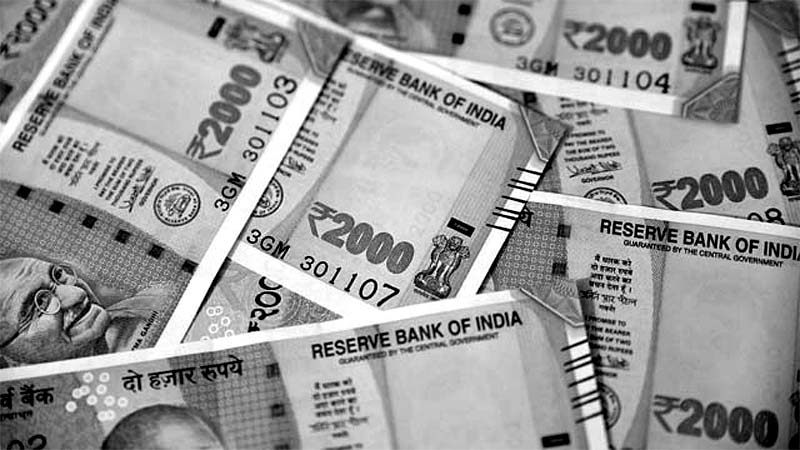The Kanwar Yatra, an annual pilgrimage undertaken by devotees of Lord Shiva, is a remarkable spectacle that unfolds along the national highway connecting New Delhi to Haridwar. This spiritual journey sees millions of predominantly male participants don saffron attire and carry pots filled with holy Ganga water as they trek distances ranging from 30 km to 500 km. With its origins steeped in mythology and religious devotion, the Kanwar Yatra holds great significance for Hindus across the country. However, the yatra is not without its share of challenges, controversies, and its own unique intersection with politics. In this iExplained, we delve into the multifaceted nature of the Kanwar Yatra, exploring its spiritual essence, the hardships faced, and the political landscape that surrounds it.
A Test of Faith and Traffic Woes
As devotees make their way home, predominantly from Haridwar and Varanasi, they carry the sacred Ganga water in their pots to pour over Shivlings, symbolizing their devotion to Lord Shiva. Commencing on the first day of the Hindu month of Shravan and culminating on Shivratri, the Kanwar Yatra is regarded as a sacred journey of self-discovery and spiritual connection. In 2022 alone, a staggering 4 crore people collected Ganga river water in Haridwar. This year, an estimated 67 lakh people have visited the town on July 12, with the yatra scheduled to conclude on July 15.
However, the Kanwar Yatra’s immense popularity creates challenges for both devotees and other commuters. Frustrated drivers often find themselves stuck in traffic as the kanwariyas, walking barefoot and carrying their pots, overtake vehicles in lanes specially designated for their use. The resulting congestion not only affects the national highway but also spills into city streets ill-equipped for pedestrians. These disruptions, combined with the presence of kanwariyas carrying pots weighing up to 50 liters suspended from bamboo poles, contribute to the logistical complexities of the yatra.
Commercialization and Changing Dynamics
The Kanwar Yatra has witnessed notable changes in recent years. Roadside commerce has emerged to cater to the needs of kanwariyas, providing them with saffron flags, Shiv-themed merchandise, and other essentials. This commercialization has transformed the landscape, replacing small stores catering to daily necessities with vendors targeting the devotees’ specific requirements. Furthermore, the overnight halting zones have expanded, encroaching upon valuable road space. Some participants even opt for flashy trucks adorned with loud music and disco lights, deviating from the traditional spiritual walkathon and introducing elements of ostentation.
Controversies and Safety Concerns
While the majority of the Kanwar Yatra remains peaceful, unfortunate incidents of violence and vandalism have marred its reputation. Devotees’ perception of the sanctity of the holy water can sometimes lead to aggression when they believe it has been “polluted” by outsiders. Notably, a group of kanwariyas allegedly vandalized a car and attempted to set it ablaze after the vehicle reportedly touched their kanwar, considering it a contamination of the “pure” Ganga jal. This incident highlights the need for understanding and dialogue between devotees and the general public to prevent such confrontations. Safety concerns also arise due to overcrowded campsites, lack of sanitation facilities, and the absence of provisions for women participants.
Walking the Talk and Personal Perspectives
Among the devoted participants, there is a range of perspectives regarding the Kanwar Yatra. Manoj Kumar, a seasoned participant, recognizes that some people view the kanwariyas as intrusive but asserts that he and his group walk quietly, avoiding disturbances. Naveen Singh, a tent shop owner, emphasizes that public spaces belong to all citizens, regardless of their spiritual pursuits, asserting his right to be on the road with or without a pot of holy water. These individual viewpoints reflect the complex tapestry of opinions that coexist within the yatra.
Camping and Challenges Faced
Camp sites along the highways provide rest and sustenance for kanwariyas. These sites offer shelter during the day, a place to sleep at night, and free meals such as khichri, dalia, or poori-aloo. Many of these facilities are funded by religious organizations, trade union leaders, politicians, and businessmen. The camps are adorned with larger-than-life posters and hoardings, often showcasing politicians seeking to establish their presence and connect with potential voters. The atmosphere is filled with energetic Bollywood music, adding to the vibrant ambiance that energizes the pilgrims.
However, challenges persist at the camps. Biases prevail, as demonstrated by Sunil’s comment about women and their perceived purity. Sanitation problems are predominantly borne by women due to the lack of proper bathroom facilities, resulting in the proliferation of plastic bottles and makeshift drying areas for saffron T-shirts. Despite these challenges, participants like Manju Gupta and her son Anmol remain hopeful, seeking good health and offering prayers for their families’ well-being.
Religion, Politics, and the Kanwar Yatra
The intersection of religion and politics is an intrinsic part of the Kanwar Yatra. In BJP-ruled states like Uttar Pradesh and Uttarakhand, elaborate arrangements have been made to support the yatra, including heavy police deployment, showering of flower petals on devotees from helicopters, and temporary closure of meat shops along the route. Prominent politicians eagerly embrace the yatra as an opportunity to engage with devotees, boost their political standing, and demonstrate their commitment to Hindu values. The Kanwar Yatra has become intertwined with political dynamics, showcasing the significance and influence of religious events in the broader political landscape.
Conclusion
The Kanwar Yatra represents a convergence of faith, challenges, and political dimensions. It serves as a testament to the deep spiritual devotion of the kanwariyas, who embark on an arduous journey to pour Ganga water on Shivlings in their hometowns. However, the yatra’s immense popularity gives rise to traffic congestion, social divisions, and safety concerns. The commercialization of the yatra, controversies surrounding the sanctity of the holy water, and the intersection with politics further add complexity to this annual pilgrimage. Striking a balance between religious sentiments, public welfare, and political aspirations is crucial to ensuring a harmonious and meaningful Kanwar Yatra experience for all.

